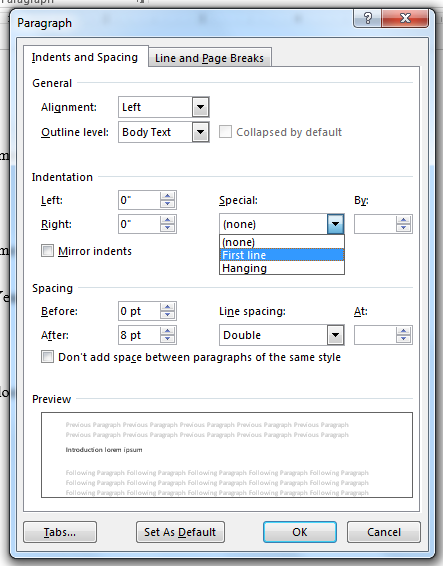
(see KB )īut there is another caveat on the virtual hanging indent - in RTF/DOC/WordML (note this rule does not apply to DOCX) the virtual hanging indent tab stop is used - if and only if - there are no tab stops set in the list, paragraph, or styles (list/paragraph style) after the virtual position. One more thing - the use hanging tab only occurs in Word 2007+ (ie 2007, 2010 & later) - and it's the default in 2007+ which makes it sort of weird:įor Word xml file, the default behavior of Word 20+ is to omit the virtual hanging tab (If Word 2007+, we have an option to make Word enable the hanging tab)įor normal Word 2003 doc files opened in Word 2003, the virtual hanging tab is always omitted.įor normal Word 2003 doc files opened in Word 2007+, Word 2007+ will automatically set the option "Don't use hanging indent as tab stop for bullets and numbering" selected, and omit the hanging indention.įor normal Word 2007+ docx files opened in Word 2007+, Word 2007+ will use hanging indent as tab top for bullets and numbering by default.įor normal Word 2007+ docx files opened in Word 2003, Word 2003 will omit the virtual hanging tab, and therefore, may misaligned the document. Finally, press enter on your keyboard to create the indent. Then, use the arrow keys on your keyboard to highlight the Hanging option. Next, click on the tab button at the top of the text editor toolbar. You justify now so that it's always relative to the same tab stops. To make a hanging indent in Microsoft Word for Mac, follow these simple steps: -First, select the text that you want to indent. Then we just need to know what the next tab stop is.įor that, any tab stop after the end of the displayed level text is valid:Īny hanging indent (as long as the doNotUseIndentAsNumberingTabStop element §2.15.3.2 is not set)ĭefault tab stops at the distances set by the defaultTabStop element §2.15.1.24įinally, we justify the result - from start of the level text to end of the line. (Note: this is the default if suff is not set!) If it's space or nothing, add a space or nothing. Now, look at the suff element §2.9.30 to see what separates the bullet from the text. If the numFmt isn't "bullet", we need to replace the % syntax appropriately. Next, place the text in the lvlText element §2.9.12 at the location of the final left indent. If there is a then that tab is cleared and not only does not count as a tab, but clears out any parent tabs (style, list) that are at the same position.įirst, check the numFmt element §2.9.18 to see the format of any numbers in the list definition.
#HOW TO SET A FIRST LINE INDENT IN WORD FULL#
Since tab stops are additive, we just gather them all up and we have the full set of tab stops There, it correctly states that the direct formatting (the pPr under the p element) supersedes the version in the list definition


This is also posted at Indent Positioning in DOCX (where it has much better formatting than what I could do here).įirst, to get the final state of any property (including indents), we need to follow the style hierarchy rules in §2.7.2 of the specification


 0 kommentar(er)
0 kommentar(er)
